Russian Archaeologists Uncover Rare Amazon Warrior Women Burial
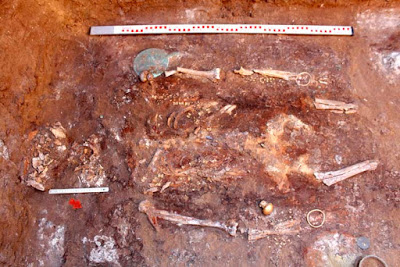
Russian Archaeologists Uncover Rare Amazon Warrior Women Burial
A remarkable trove of ancient jewellery has been discovered in the first-century AD grave of a noble warrior woman.

The female fighter was a Sarmatian, a people who worshipped fire and were modelled after the Amazons of Greek mythology for their prominent role in warfare. Archaeologists have characterized the discovery of the intact burial mound in Russia as “priceless.”
Between the 6th and 4th centuries BC, nomadic people known as the Sarmatians migrated from Central Asia to the Ural Mountains. They were ferocious horse-riding warriors who sacrificed horses to their fire god.
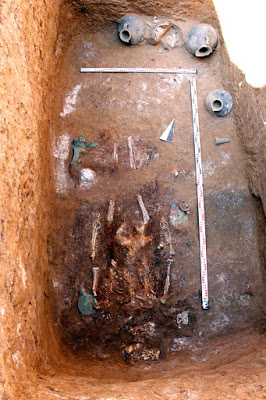
As well as gold and silver jewellery, the experts found more than 100 iron arrowheads in the grave, as well as the warrior’s horse harness.
Early analysis of her teeth suggests she had survived the battles of this period and reached a great age. She was buried with a man – assumed to be her husband – but his tomb was looted, revealed experts from the Institute of Archaeology, of the Russian Academy of Sciences.
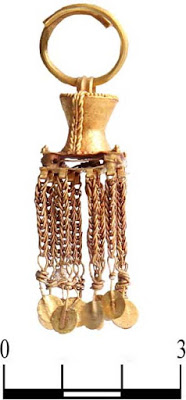
The noblewoman’s grave and treasures are in a group of at least 29 burial mounds that came to light during the construction of a new airport serving Rostov-on-Don.
Archaeologist Roman Mimokhod said: ‘Most of the burials on this site are plundered and, of course, it is great luck to find an intact one.
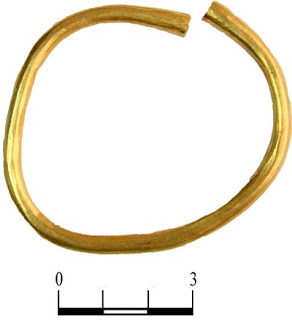
‘It is interesting that there are two burials in this mound. One obviously belonged to man and was totally looted. We found only some fragments of crockery and scattered bones. ‘We will check the bones, but we are almost sure it was some noble man. The second burial belonged to the woman.’
He stressed: ‘We believe that it was a double burial of some noble Sarmatian and his wife.’
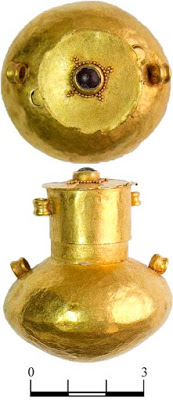
Detailed tests on her remains will be conducted and the results announced later.
‘The depth of the tomb is [13 feet] four metres and it was covered with a wooden decking. At the edge of the grave pit were found the remains of a harness and more than 100 iron arrowheads. According to ancient historians, Sarmatian women participated in hostilities and this find of arrowheads is indirect confirmation of this.’
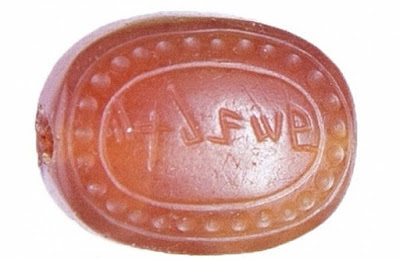
Next to her skull, gold earrings with pendant chains were found, while a bronze mirror was close to her shoulder.
‘The collar of her dress was decorated with stamped buckles of gold leaf in the form of a stylised ram’s head,’ he said.
‘Her sleeves were embroidered with colourful beads combined with gold triangular and hemispherical plaques. On each hand – a gold bracelet. On her breasts were various beads, among which was a gem with a single-line Phoenician or early Aramaic inscription. At her pelvis lay a gold vial. This had a tight lid and its contents are fossilised.’
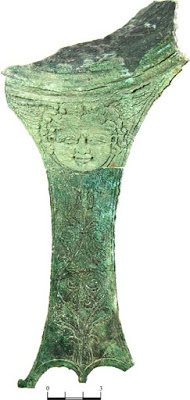
‘We will analyse this to understand what it was, but most likely it contained some incense. By her right hand were fragments of wooden dishes and a cup. At her feet there were fragments of a bronze bucket (ladle) with floral ornaments and the image of the Gorgon’s head on a stick. In the north-eastern part of the grave were located four ceramic vessels.’
A small ‘hiding place’ in the grave contained a collection of knives and an unfinished sword with brooches on its handle.
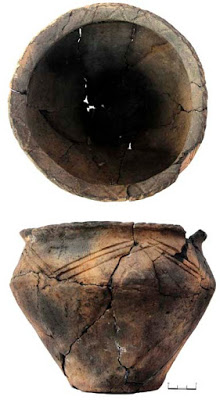
‘One of the most unusual things about these finds is that items in the burial were dated from the first century BC to the first century AD. It is rather unique, I have not see such a combination before and have not heard about it. This can mean that the most ancient things were handed down for a long time and finally were buried with this noble woman.’
The Sarmatians flourished from the 5th century BC to the fourth century AD.